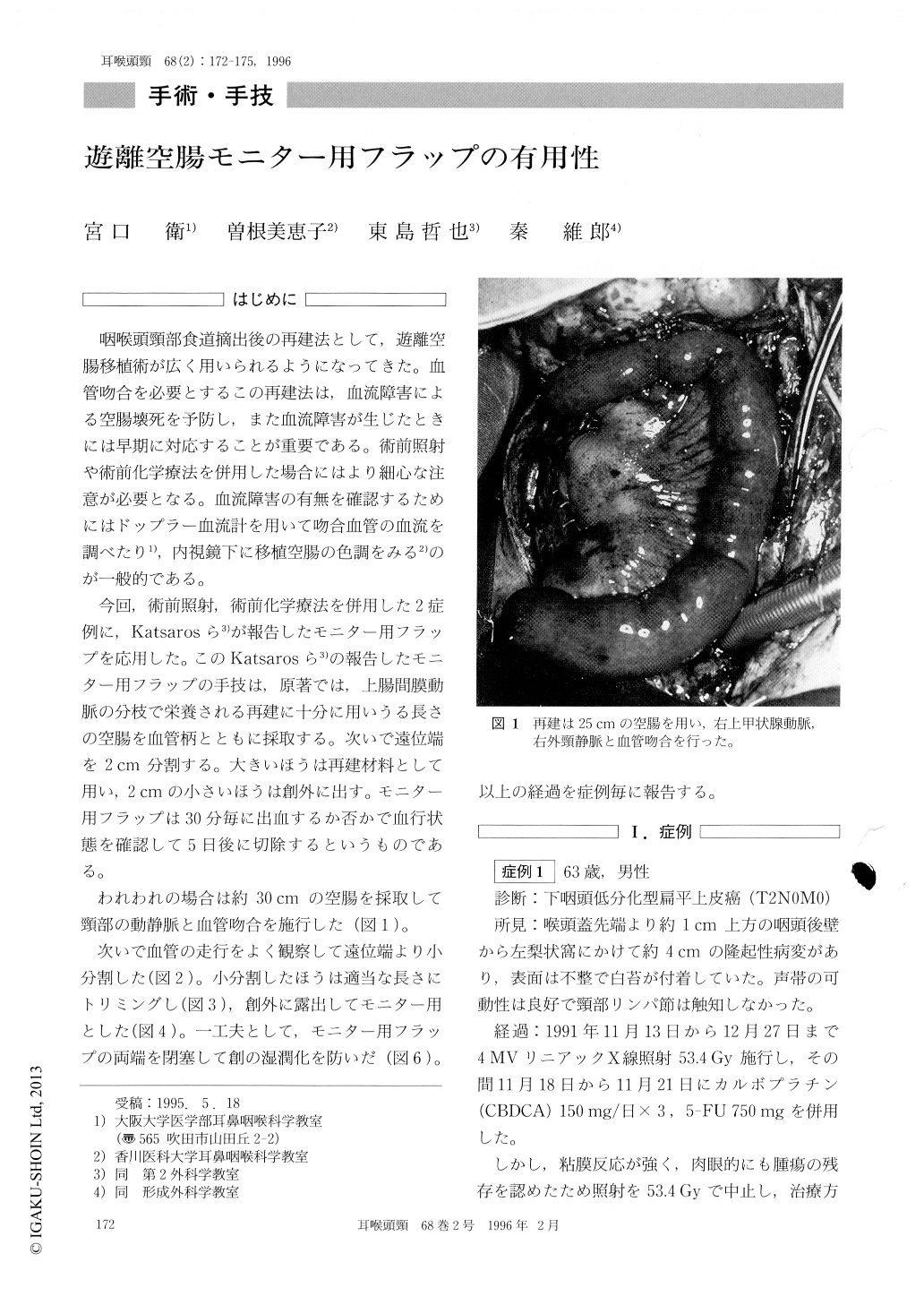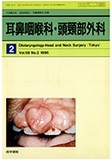Japanese
English
- 有料閲覧
- Abstract 文献概要
- 1ページ目 Look Inside
はじめに
咽喉頭頸部食道摘出後の再建法として,遊離空腸移植術が広く用いられるようになってきた。血管吻合を必要とするこの再建法は,血流障害による空腸壊死を予防し,また血流障害が生じたときには早期に対応することが重要である。術前照射や術前化学療法を併用した場合にはより細心な注意が必要となる。血流障害の有無を確認するためにはドップラー血流計を用いて吻合血管の血流を調べたり1),内視鏡下に移植空腸の色調をみる2)のが一般的である。
今回,術前照射,術前化学療法を併用した2症例に,Katsarosら3)が報告したモニター用フラップを応用した。このKatsarosら3)の報告したモニター用フラップの手技は,原著では,上腸間膜動脈の分枝で栄養される再建に十分に用いうる長さの空腸を血管柄とともに採取する。次いで遠位端を2cm分割する。大きいほうは再建材料として用い,2cmの小さいほうは創外に出す。モニター用フラップは30分毎に出血するか否かで血行状態を確認して5日後に切除するというものである。
われわれの場合は約30cmの空腸を採取して頸部の動静脈と血管吻合を施行した(図1)。
次いで血管の走行をよく観察して遠位端より小分割した(図2)。小分割したほうは適当な長さにトリミングし(図3),創外に露出してモニター用とした(図4)。一工夫として,モニター用フラップの両端を閉塞して創の湿潤化を防いだ(図6)。以上の経過を症例毎に報告する。
A free jejunal transfer has become a most popular form of pharyngoesophageal reconstruction. Post-operative monitoring of the perfusion of the free flap is vitally important in achieving a favorable outcome. A reliable method of the monitoring free vascularized jejunum has been used in two patients. The jejunum island flap was divided into major and minor segments. The major part was used for phar-yngoesophageal reconstruction, while the minor part supplied by the same segmental mesenteric artery was exteriorised through the neck incision. The clinical assessment of flap color was often performed without any pains nor complications.

Copyright © 1996, Igaku-Shoin Ltd. All rights reserved.


